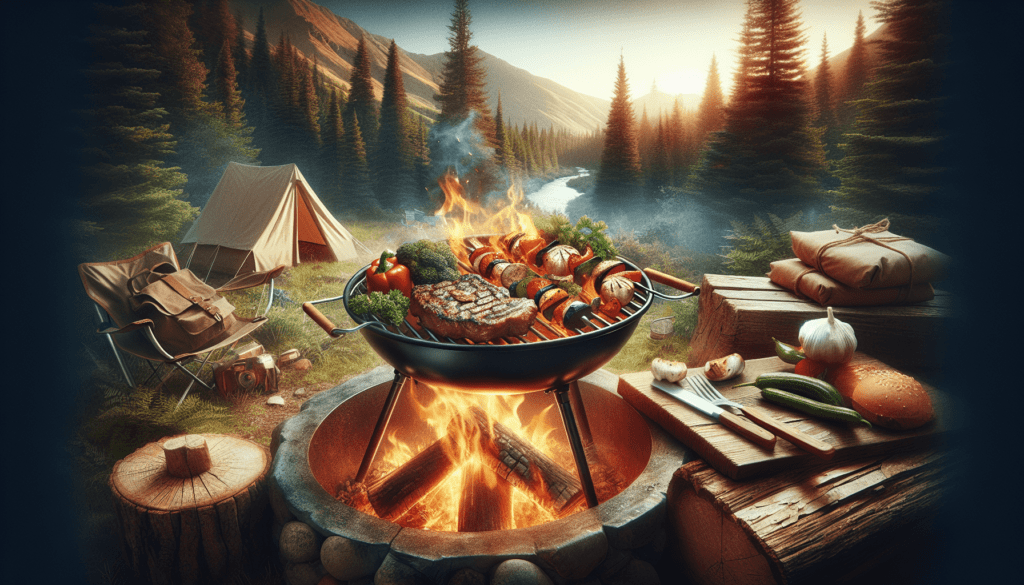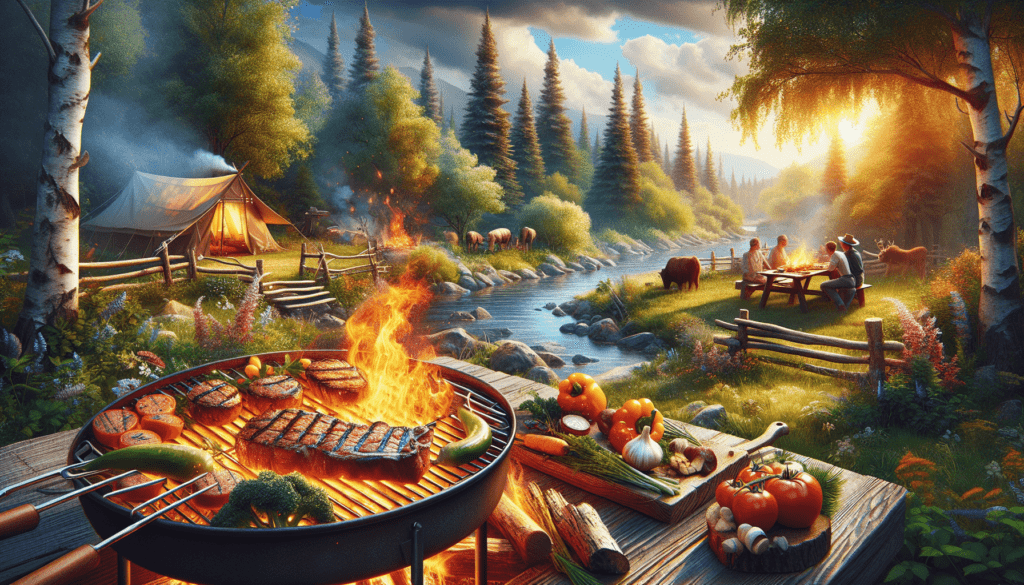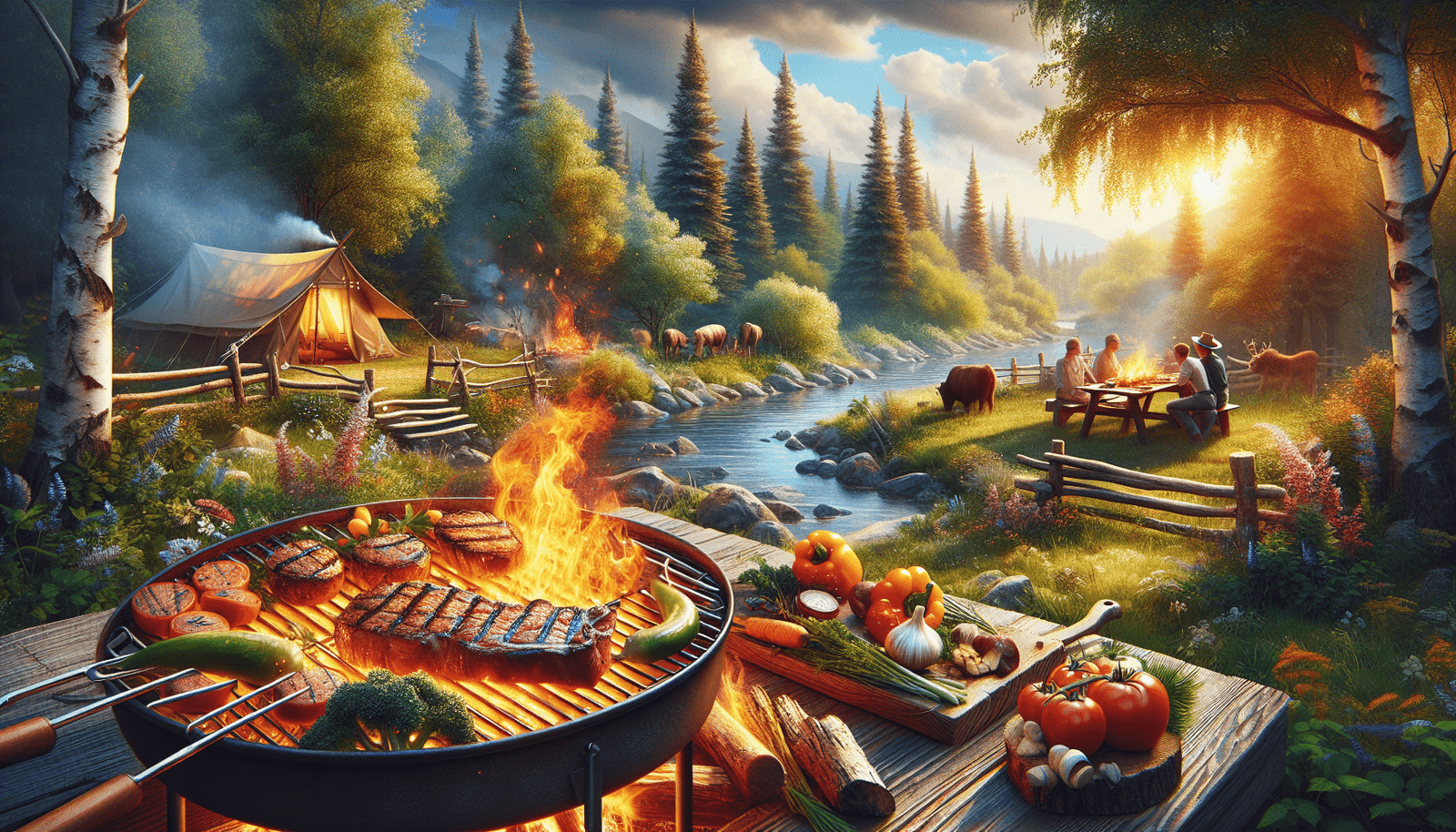Have you ever wondered how to elevate your campfire grilling skills to professional levels? Campfire grilling can be challenging yet rewarding, especially when you follow expert tips and tricks. This article will provide you with comprehensive and detailed advice on how to make the most out of your campfire grilling experience.

Understanding the Basics of Campfire Grilling
To start, mastering the basics of campfire grilling is crucial. Grilling over an open flame is different from using a traditional grill. Understanding the fundamental aspects can simplify the process and enhance the flavor of your food.
Choosing the Right Wood
The type of wood you use can significantly impact the taste and success of your grilling. Hardwoods like oak, hickory, and maple are ideal because they burn hotter and longer, providing a consistent heat source. Avoid using softwoods like pine and cedar as they can impart an unpleasant taste and produce excessive smoke.
Setting Up the Campfire
The setup of your campfire plays a critical role in the grilling process. Start by arranging the wood in a teepee or log cabin structure to ensure proper airflow. Ignite the wood using natural fire starters like kindling or dry leaves. Once the fire is going, allow it to burn down to embers for more controlled cooking conditions.
Fire Safety Precautions
Fire safety is paramount when grilling over an open flame. Always have a bucket of water or sand nearby to extinguish the fire if necessary. Additionally, maintain a safe distance between your grilling area and tents or other flammable materials.
Necessary Tools for Campfire Grilling
Having the right tools can make your campfire grilling more efficient and enjoyable. Here is a breakdown of essential tools you should consider.
Grilling Grate
A sturdy grilling grate is indispensable for campfire cooking. Look for one that is adjustable in height to control the cooking temperature more effectively.
Long-Handled Tongs and Spatula
Long-handled tools are a must to keep a safe distance from the heat. Tongs and spatulas made from heat-resistant materials will help you maneuver and flip your food with ease.
Cast-Iron Skillet
A cast-iron skillet is a versatile tool that can be used for various cooking methods, from frying to baking. Its excellent heat retention properties make it perfect for campfire grilling.
Meat Thermometer
A meat thermometer ensures your food is cooked to the correct internal temperature, reducing the risk of undercooked or overcooked meals.
Preparing Your Food for Campfire Grilling
Preparation is key to successful campfire grilling. Properly seasoned and prepped food can significantly enhance the grilling process and final flavor.
Marinating and Seasoning
Marinating adds flavor and tenderness to your meat. Allow your food to marinate for several hours or overnight for the best results. Seasoning with herbs, spices, and salts can elevate the natural flavors of your ingredients.
Pre-Cooking Some Ingredients
Consider pre-cooking hard-to-grill items like potatoes or carrots. This will ensure even cooking and reduce the time required over the campfire.
Skewering and Wrapping
Using skewers or wrapping food in aluminum foil can simplify the grilling process. Skewers allow for even cooking, while foil packets can lock in moisture and flavors.
Grilling Techniques
Mastering various grilling techniques can take your campfire cooking to the next level. Here, we explore some methods that can make a difference in your grilling experience.
Direct vs. Indirect Grilling
Direct grilling involves placing food directly over the heat source. This method is suitable for quick-cooking items like steaks and burgers. Indirect grilling, on the other hand, requires placing the food away from the flame, cooking it slowly with ambient heat. This technique is ideal for larger cuts of meat that need extended cooking times.
Rotisserie Grilling
Using a rotisserie skewer can help in evenly cooking larger pieces of meat. The constant rotation allows for uniform heat distribution, resulting in juicy and well-cooked meals.
Smoking
Adding wood chips to your fire can introduce a smoky flavor to your food. Soak the wood chips in water for at least 30 minutes, then place them directly on the embers to produce smoke.

Cooking Different Types of Food
Different types of food require specific techniques and attention to detail. Below is a comprehensive guide on how to grill various foods effectively.
Grilling Meats
Meats are a popular choice for campfire grilling. To achieve the best results, pay attention to the following:
Beef
Cuts like ribeye and sirloin are excellent for campfire grilling. Cook the beef to your desired level of doneness using a meat thermometer for accuracy.
| Doneness | Internal Temperature |
|---|---|
| Rare | 125°F (52°C) |
| Medium Rare | 135°F (57°C) |
| Medium | 145°F (63°C) |
| Well Done | 160°F (71°C) |
Chicken
Chicken needs to be cooked to an internal temperature of 165°F (74°C) to ensure safety. Brine the chicken beforehand for added moisture and flavor.
Fish
Fish cooks quickly and requires careful attention to prevent drying out. Use a fishtail grilling basket to keep the fish intact and easier to flip.
Grilling Vegetables
Vegetables can be just as delicious as meats when grilled correctly. Cut the vegetables into even sizes for consistent cooking. Marinate them with olive oil, salt, and herbs for enhanced flavor.
| Vegetable | Grilling Time |
|---|---|
| Bell peppers | 6-8 minutes |
| Zucchini | 4-5 minutes |
| Corn on the cob | 10-15 minutes |
Grilling Fruits
Grilled fruits can be a delightful addition to your meal or serve as a dessert. Fruits like pineapples, peaches, and apples caramelize beautifully over the fire.
| Fruit | Grilling Time |
|---|---|
| Pineapple | 2-3 minutes per side |
| Peaches | 2-3 minutes per side |
| Apples | 4-5 minutes per side |
Tips for Cooking Over an Open Flame
When cooking over an open flame, several factors come into play. These tips can guide you toward a successful grilling session.
Managing Heat
Controlling the heat is essential for consistent cooking. Adjust the height of your grilling grate or move the food to different areas of the fire to manage the temperature.
Avoiding Flare-Ups
Flare-ups can occur when fat drips onto the fire, causing flames to shoot up. To avoid this, trim excess fat from meats and keep a spray bottle of water handy to quell any flare-ups.
Resting Your Food
Allow your grilled meats to rest for a few minutes before serving. This enables the juices to redistribute, resulting in juicier and more flavorful servings.
Cleaning and Maintaining Your Equipment
Proper care and maintenance of your grilling equipment can extend its lifespan and ensure optimal performance.
Cleaning the Grate
After each grilling session, clean the grate with a wire brush to remove any food residues. For a more thorough cleaning, soak the grate in warm soapy water and scrub it down.
Seasoning the Cast-Iron Skillet
To maintain your cast-iron skillet, season it after each use. Apply a thin layer of oil and heat it over the fire to create a non-stick surface.
Storing Your Tools
Store your grilling tools in a dry, cool place to prevent rust and damage. Consider investing in a carrying case for organization and easy transport.
Advanced Campfire Grilling Techniques
For those looking to take their campfire grilling skills to the next level, here are some advanced techniques to explore.
Using A Dutch Oven
A Dutch oven can open up a world of possibilities for campfire cooking. From baking bread to slow-cooking stews, the versatility of a Dutch oven is unparalleled.
Planking
Cooking food on wooden planks can impart a unique, smoky flavor. Cedar planks are commonly used, but you can also experiment with other types of wood for different flavors.
Foil Packet Cooking
Foil packets can simplify the cooking process and make cleanup easier. Arrange your ingredients in aluminum foil, seal the packet tightly, and place it on the grill or embers.
Cooking Directly on Coals
For a truly rustic experience, cook food directly on hot coals. Wrap vegetables or potatoes in foil and nestle them among the embers. This method requires careful monitoring to avoid burning but can result in richly flavored dishes.
Troubleshooting Common Issues
Even experienced grillers can encounter challenges. Here are solutions to some common campfire grilling problems.
Uneven Cooking
Uneven cooking is often due to fluctuating heat levels. To mitigate this, rotate your food regularly and use a grilling grate with adjustable height.
Food Sticking to the Grate
Food can stick to the grate if it isn’t properly oiled. Before placing your food on the grill, brush the grate with a high smoke point oil like canola or grapeseed oil.
Overcooking or Undercooking
Using a meat thermometer can help you achieve the perfect level of doneness. For vegetables and fruits, follow recommended grilling times and adjust as needed based on the heat of your fire.
Environmental and Ethical Considerations
Grilling in the great outdoors comes with a responsibility to the environment. Follow these guidelines to ensure your outdoor cooking practice is sustainable and respectful of nature.
Leave No Trace
Always clean up your campsite thoroughly. Dispose of ash and embers properly once they have completely cooled. Carry out all trash and food waste to leave the environment as pristine as you found it.
Sustainable Sourcing
Choose food items that are sustainably sourced and eco-friendly. Opt for locally produced meats and vegetables whenever possible to reduce your carbon footprint.
Use Biodegradable Supplies
Using biodegradable supplies like plates, cutlery, and cleaning products can minimize your impact on the environment. Avoid single-use plastics and opt for reusable or compostable items.
Final Thoughts
Campfire grilling offers a unique and memorable outdoor cooking experience. By understanding the basics, preparing appropriately, and utilizing the right techniques, you can enjoy delicious and well-cooked meals in nature. With these tips and insights, you’ll be well prepared to tackle any campfire grilling challenge that comes your way, ensuring a safe and enjoyable adventure.
Thank you for taking the time to improve your campfire grilling skills. Applying these tips and techniques will undoubtedly enhance your outdoor culinary endeavors, allowing you to impress your fellow campers with delectable, well-prepared meals.
Support us! Wilderness gear Pro may earn a small commission from affiliate links in this article. Learn More


